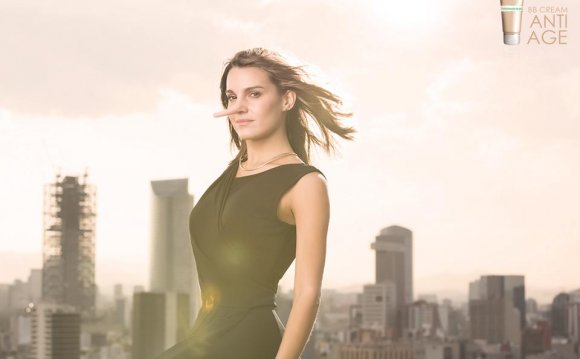
 March 26 | By Ben Chapnick | Posted in Advice for Clients | Print This Post
March 26 | By Ben Chapnick | Posted in Advice for Clients | Print This Post
Photography is the single most important element of most advertising campaigns. While copywriters may spend hours producing an eye-catching headline and copy that explains the benefits of a product, it’s the image that first attracts the viewer. It’s also the last thing the viewer usually remembers after turning the page.
Advertising images may be used on billboards and in magazines, on posters and on flyers. They may be straightforward depictions of a product or a model — or they could incorporate complex graphics and use the very latest post-production techniques to show that the company is on the leading edge.
In any of these scenarios, planning is vital.
The Strategy Session
Our photographers start with a strategy meeting with the client to develop a brief that is as tight as possible, reducing the risk of surprises when the final photographs are delivered. The photographer has to be absolutely clear about the line the company wants to take with the product, the kind of image they want it to possess, and the messages they want it to convey.
Photo Credit: Rene De Carufel
Says Marc Schultz, a Black Star photographer whose clients have included Ikea, L’Oreal, Bang & Olufsen and Canon Cameras:
If clients can supply me with some visual guidance on what it is they would like to achieve photographically, it makes a huge difference to me. I found that often you can sit with a client for a long time discussing what they would like a photograph to look like or portray, but you can never have as clear of an understanding as when they show you visually what their objectives are.
That’s particularly important when working with smaller ad agencies and clients. While larger agencies may choose to send an art director to oversee and direct the photographer’s work, that’s often not the case for clients on limited budgets. Many rely on the photographer’s skills and creativity to capture the right picture within the parameters laid out in the strategy meeting.
 Marc, for example, has found that clients often look to him to refine their basic concepts and the messages they want their images to contain. They give him creative control, and he is then able to take advantage of any unexpected opportunities that may turn up during the shoot.
Marc, for example, has found that clients often look to him to refine their basic concepts and the messages they want their images to contain. They give him creative control, and he is then able to take advantage of any unexpected opportunities that may turn up during the shoot.
Says Marc:
Often with the creative process, you start with one basic idea and it ends up developing into something completely different by the time all is said and done.
Photo Credit: Marc Schultz
Managing Logistics
However the client wants the shoot managed, once the strategy has been developed, the logistical issues will need
to be addressed. And this is often where the biggest challenges lie.
Props must be found, procured and moved to the shoot. Locations must be chosen and checked for their suitability. A target shooting date has to be set and agreed upon. If models are being used, they too need to be selected, booked and their accommodation arranged.
In fact, the presence of models on an advertising shoot requires a separate range of skills. While the product itself can be lit in different ways to produce the right effect, models have to be coaxed and relaxed to portray the look that will attract attention and help the ad stand out.
René De Carufel, a Montreal-based Black Star photographer with more than three decades of experience, says that models create the most consistent challenge on these kinds of shoots:
Every shoot is somewhat a challenge — at least it should be — some bigger than others. But since I mainly deal with people, it is mostly to create a connection and gain their trust. To achieve that, I think you simply have to show respect, kindness and humor and hopefully make them feel comfortable.
The photographer has to put the different elements of the shoot in place, from arranging the scene to bringing in the people and the items, as well as all the equipment. On the shoot itself, he has to look for the best compositions within the guidelines provided, take direction from an art director if one is present, and often work with the model to get the right look to match the product.
And he might have to do post-production work as well, before delivering the final images to the client.
Photo Credit: Harrison McClary
Hiring an Experienced Pro
For marketing directors, there’s no substitute for hiring a professional photographer with substantial experience in advertising photography. Poor images can make a product disappear into a background of similar shots and identical advertisements, while an outstanding photograph will attract attention and stay in the viewer’s mind. It can mean the difference between success and failure.
At Black Star, we only assign photographers who have proved to us that they can organize shoots of the scale and visibility the client requires. Their portfolios must indicate that they can work with direction, contribute their own creativity and produce the images the client wants. We source our photographers from around the world, so we always have a choice of the very best photographers available anywhere and we can have them on location wherever the shoot may be.
At a time when the public can skip past commercials by pushing a button on their TiVo, when Internet users are barraged by ads they barely even notice, and when magazine and newspaper sales continue to decline, it takes a very special image to stand out and force its way into the consciousness of consumers.







